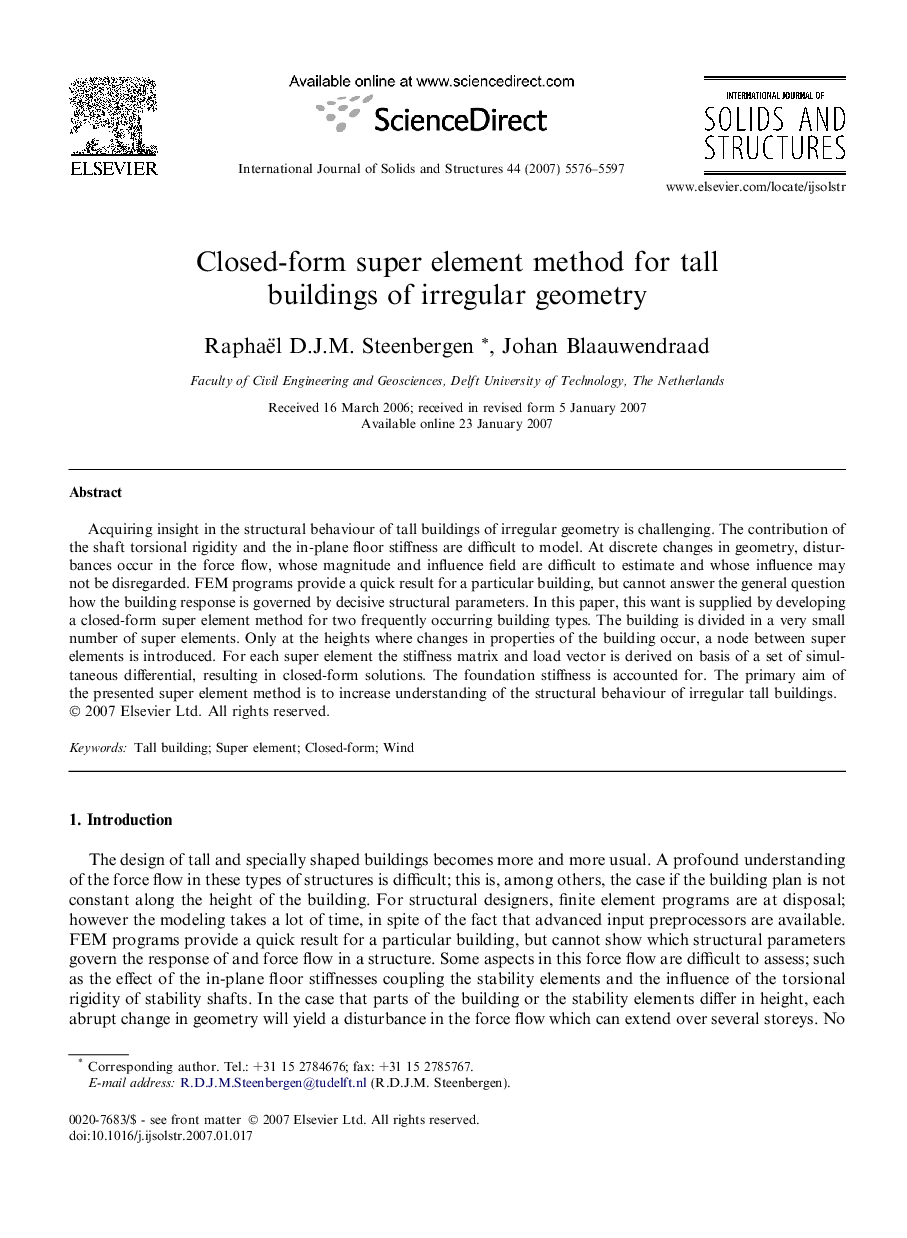| Article ID | Journal | Published Year | Pages | File Type |
|---|---|---|---|---|
| 279499 | International Journal of Solids and Structures | 2007 | 22 Pages |
Acquiring insight in the structural behaviour of tall buildings of irregular geometry is challenging. The contribution of the shaft torsional rigidity and the in-plane floor stiffness are difficult to model. At discrete changes in geometry, disturbances occur in the force flow, whose magnitude and influence field are difficult to estimate and whose influence may not be disregarded. FEM programs provide a quick result for a particular building, but cannot answer the general question how the building response is governed by decisive structural parameters. In this paper, this want is supplied by developing a closed-form super element method for two frequently occurring building types. The building is divided in a very small number of super elements. Only at the heights where changes in properties of the building occur, a node between super elements is introduced. For each super element the stiffness matrix and load vector is derived on basis of a set of simultaneous differential, resulting in closed-form solutions. The foundation stiffness is accounted for. The primary aim of the presented super element method is to increase understanding of the structural behaviour of irregular tall buildings.
